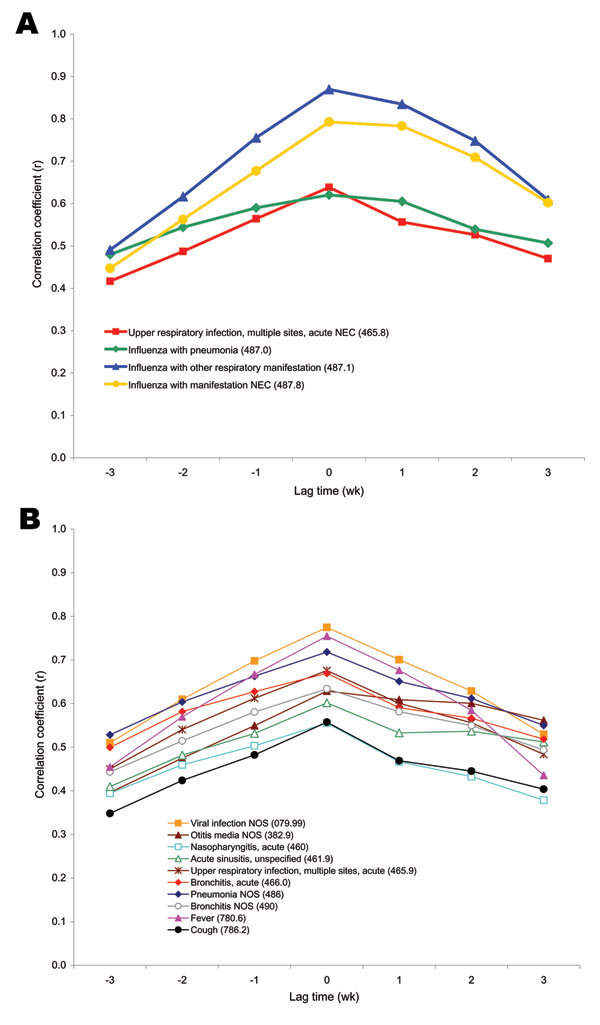Volume 13, Number 2—February 2007
Research
Code-based Syndromic Surveillance for Influenzalike Illness by International Classification of Diseases, Ninth Revision
Figure 1

Figure 1. Lagged correlation analysis between individual codes from the International Classification of Diseases, Ninth Revision (ICD-9), and unmatched positive respiratory specimens from October 2000 to December 2004. Each of the individual ICD-9 codes that had high correlation and signal-to-noise ratio when compared with positive influenza laboratory specimens taken during the same time frame (Table 5) were compiled into new large and small influenzalike illness (ILI) groups (large codes were used >50×/day on average) and compared again to the positive specimens through lagged analysis. The ICD-9 data were shifted by three 1-week increments both forward and backward, while holding the positive specimens constant. A) Lag time correlation coefficients for ICD-9 codes in the new large count ILI group. B) Lag time correlation coefficients for ICD-9 codes in the new Small count ILI group.NEC, necrotizing enterocolitis; NOS, not otherwise specified.
1Current affiliation: Tacoma–Pierce County Health Department, Tacoma, Washington, USA
2Current affiliation: US Census Bureau, Suitland, Maryland, USA
3Current affiliation: Uniformed Services University of the Health Sciences, Bethesda, Maryland, USA